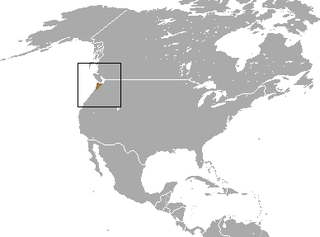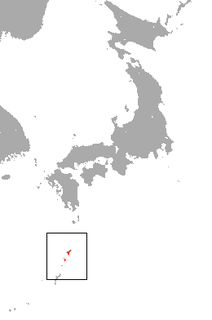
The hammerhead sharks are a group of sharks that form the family Sphyrnidae, so named for the unusual and distinctive structure of their heads, which are flattened and laterally extended into a "hammer" shape called a cephalofoil. Most hammerhead species are placed in the genus Sphyrna, while the winghead shark is placed in its own genus, Eusphyra. Many, but not necessarily mutually exclusive, functions have been postulated for the cephalofoil, including sensory reception, manoeuvering, and prey manipulation. Research has shown that the cephalofoil gives the shark improved binocular vision and depth perception.

The International Union for Conservation of Nature (IUCN) Red List of Threatened Species, founded in 1964, is the world's most comprehensive inventory of the global conservation status of biological species. It uses a set of criteria to evaluate the extinction risk of thousands of species and subspecies. These criteria are relevant to all species and all regions of the world. With its strong scientific base, the IUCN Red List is recognized as the most authoritative guide to the status of biological diversity. A series of Regional Red Lists are produced by countries or organizations, which assess the risk of extinction to species within a political management unit.

The Adamawa Plateau is a plateau region in central Africa stretching from south-eastern Nigeria through north-central Cameroon to the Central African Republic. The plateau was named after Fulani Muslim leader Modibo Adama. The part of the plateau that lies in Nigeria is more popularly known as Gotel Mountains. The Adamawa Plateau is the source of many waterways, including the Benue River. It is important for its deposits of bauxite. The average elevation is about 3,300 feet, but elevations can reach as high as 8,700 feet. The vegetation is mostly savanna, and is sparsely populated. Cattle raising is the main occupation in the area.
The giant peccary is a possible fourth species of peccary, discovered in Brazil in 2000 by Dutch naturalist Marc van Roosmalen. In 2003, German natural history filmmaker Lothar Frenz and he succeeded in filming a group and gathering material, which later served as the type. Though recently reported, it has been known to locals as caitetu munde, which means "great peccary which lives in pairs". It was formally described in 2007, but the scientific evidence for its species status has later been questioned, which also was one of the reasons for its initial evaluation as data deficient by IUCN in 2008. Following a review in 2011, the IUCN moved the giant peccary into synonymy of the collared peccary.

The smoothback angelshark is an angelshark of the family Squatinidae found in the eastern Atlantic.

The Olympic shrew is a rare species of shrew that lives in only 13 spots in northwest Washington state and, a recent discovery, in Burns Bog, located in Delta, BC.

The Somali hedgehog is a species of mammal in the family Erinaceidae. It is endemic to Somalia. The Somali hedgehog is nocturnal.

The Hainan gymnure or Hainan moonrat is a species of mammal in the family Erinaceidae. Its natural habitat is subtropical or tropical dry forests. It was thought to be endemic to the island of Hainan, China where it is threatened due to habitat loss, but in 2018 was found to also occur in, and be rather common, within Northern Vietnam.

The Ryukyu shrew , also known as Orii's shrew is a species of mammal in the family Soricidae. It is endemic to Japan. It is threatened by habitat loss.

The Sicilian shrew is a species of mammal in the family Soricidae. It is found in Sicily (Italy) and Gozo (Malta). Its natural habitat is temperate shrubland.

Kelaart's long-clawed shrew is a species of mammal in the family Soricidae. It is monotypic within the genus Feroculus. It is endemic to Sri Lanka and southern India. Its natural habitats are subtropical or tropical dry forests, subtropical or tropical dry lowland grassland, and swamps. It is threatened by habitat loss. It is known as පිරි හික් මීයා in Sinhala.

Pearson's long-clawed shrew is a species of mammal in the family Soricidae. It is monotypic within the genus Solisorex. It is endemic to Sri Lanka. Its natural habitats are subtropical or tropical dry forests and subtropical or tropical dry lowland grassland. It is threatened by habitat loss. It is known as ශ්රී ලංකා නියදිගු මා හික් මීයා in Sinhala.

The Asian highland shrew is a species of mammal in the family Soricidae. It is found in India and Sri Lanka. Its habitat is subtropical or tropical dry forests. It is threatened by habitat loss. It is known as ශ්රී ලංකා කදු හික් මීයා in Sinhala.
The blotched sandskate is a species of fish in the family Arhynchobatidae. It is found off the coasts of Argentina, Brazil, and Uruguay. Its natural habitat is open seas.

Psammobatis is a genus of skates in the family Arhynchobatidae. These fish are found in the Atlantic and Pacific oceans off southern South America.
The shortfin sandskate is a species of fish in the family Arhynchobatidae. It is found off the shores of Argentina and Chile. Its natural habitat is open seas.
The smallthorn sandskate is a species of fish in the family Arhynchobatidae. It is found off the coasts of Argentina and Chile. Its natural habitat is open seas.

Crocidura hikmiya is a species of shrew described from the rainforests of Sri Lanka, based on both morphological and molecular data. Its closest sister species is the Sri Lankan long-tailed shrew, another Sri Lankan crocidurine shrew restricted to the high-elevation habitats of the Central Highlands. C. hikmiya has a shorter tail than the Sri Lankan long-tailed shrew; most of the other characteristics that distinguish the two species are osteological in nature .

Arhynchobatidae is a family of skates and is commonly known as the softnose skates. It belongs to the order Rajiformes in the superorder Batoidea of rays. At least 104 species have been described, in 13 genera. Softnose skates have at times been placed in the same family as hardnose skates, but most recent authors recognize them as a distinct family. Members of the Arhynchobatidae can be distinguished from hardnose skates in having a soft and flexible snout, as well as a more or less reduced rostrum.
Micronycteris giovanniae is a species of leaf-nosed bat found in Ecuador.















